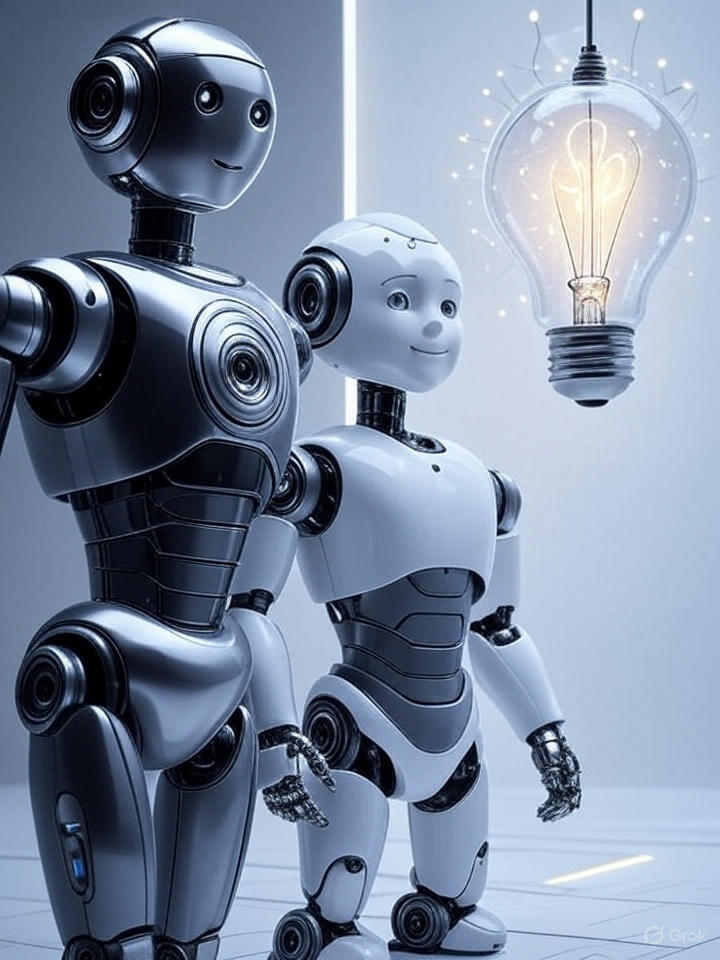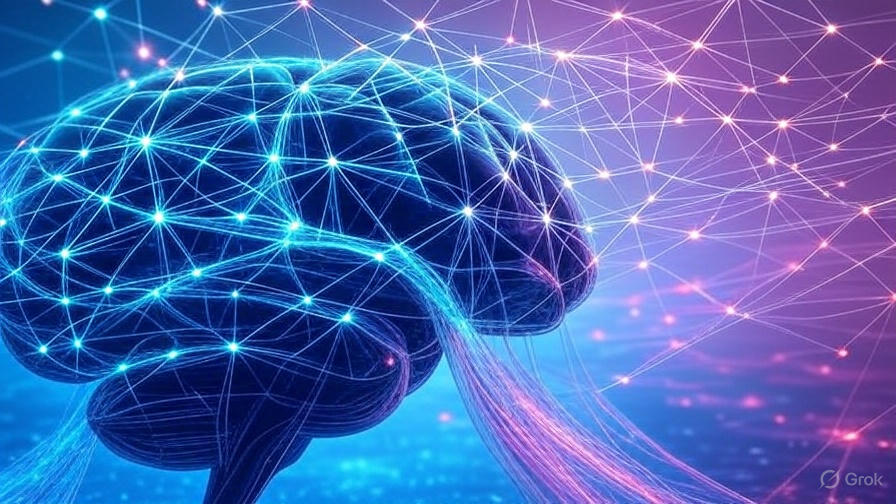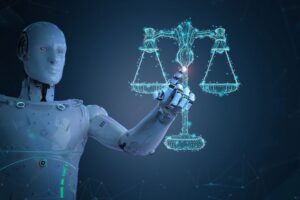AI Objectives in Business: Defining the Goals of Artificial Intelligence for 2025
Artificial intelligence has evolved from a futuristic concept to a transformative force reshaping industries worldwide. As we navigate through 2025, understanding the goals of artificial intelligence becomes crucial for businesses, researchers, and technology enthusiasts alike. This comprehensive guide explores the fundamental objectives of AI, examines current challenges and trends, and provides insights into how artificial intelligence is revolutionizing problem-solving efficiency across various sectors.
What Are the Goals of Artificial Intelligence?
The goals of artificial intelligence encompass a broad spectrum of objectives designed to create systems that can perform tasks typically requiring human intelligence. At its core, AI aims to develop machines capable of learning, reasoning, perceiving, and making decisions autonomously. These goals have evolved significantly since the field’s inception, adapting to technological advances and changing societal needs.
Primary Goals of AI Development
1. Problem-Solving and Decision-Making Enhancement
One of the most fundamental goals of AI is to enhance decision-making with AI systems that can process vast amounts of data quickly and accurately. Modern AI systems excel at identifying patterns, analyzing complex scenarios, and providing data-driven insights that support better decision-making processes. This capability has proven invaluable in fields ranging from healthcare diagnostics to financial risk assessment.
2. Automation and Efficiency Optimization
AI automation goals focus on streamlining repetitive tasks and improving operational efficiency. By automating routine processes, organizations can reduce human error, increase productivity, and allocate human resources to more strategic activities. This goal has become particularly relevant as businesses seek to optimize their operations in an increasingly competitive marketplace.
3. Predictive Analytics and Forecasting
Advanced AI systems aim to predict future outcomes based on historical data and current trends. This predictive capability enables businesses to anticipate market changes, customer behavior, and potential risks, allowing for proactive rather than reactive strategies.
AI Goals Definition: Types, Challenges, and Trends

Understanding the AI goals definition requires examining the different types of artificial intelligence and their specific objectives. According to research from MIT Technology Review, AI development follows several distinct pathways, each with unique goals and applications.
Types of AI Goals
Narrow AI Goals Narrow AI, also known as weak AI, focuses on performing specific tasks with high efficiency. These systems are designed to excel in particular domains such as image recognition, language translation, or game playing. The goal is to create specialized tools that can outperform humans in specific areas while maintaining reliability and accuracy.
General AI Aspirations Artificial General Intelligence (AGI) represents the long-term goal of creating machines with human-level cognitive abilities across all domains. While this remains a theoretical objective, research continues toward developing systems that can understand, learn, and apply knowledge across diverse contexts.
Super AI Considerations The ultimate goal of some AI researchers involves creating systems that surpass human intelligence in all aspects. This ambitious objective raises important questions about control, safety, and the future relationship between humans and artificial intelligence.
Top Goals of AI in 2025
As we examine the top goals of AI in 2025, several key objectives stand out as particularly significant for businesses and society:
1. Enhancing Human-AI Collaboration
Modern AI development increasingly focuses on creating systems that work alongside humans rather than replacing them. This collaborative approach aims to leverage the strengths of both human creativity and AI computational power, resulting in more effective and innovative solutions.
2. Improving Accessibility and Inclusion
AI systems are being designed with the goal of making technology more accessible to diverse populations. This includes developing AI tools that can assist people with disabilities, break down language barriers, and provide equal access to information and services regardless of geographical or socioeconomic factors.
3. Advancing Scientific Research
AI’s role in accelerating scientific discovery has become a primary goal for many research institutions. From drug discovery to climate modeling, AI systems are being developed to process complex scientific data and generate insights that would be impossible for humans to achieve alone.
Remarkable Goals of AI for 2025
Several remarkable goals of AI for 2025 demonstrate the field’s ambitious scope and potential impact:
Healthcare Revolution
AI systems are being developed with the goal of revolutionizing healthcare delivery. These systems aim to improve diagnostic accuracy, personalize treatment plans, and predict health outcomes with unprecedented precision. According to Forbes, AI in healthcare is expected to save millions of lives through early detection and personalized medicine.
Environmental Sustainability
AI goals increasingly include addressing environmental challenges through smart resource management, climate modeling, and sustainable technology development. These systems aim to optimize energy consumption, reduce waste, and support the transition to renewable energy sources.
Educational Transformation
AI in education goals focus on personalizing learning experiences, identifying knowledge gaps, and providing adaptive instruction that meets individual student needs. This approach aims to make education more effective and accessible to learners worldwide.
AI Challenges and Trends Shaping Future Goals
Understanding AI challenges and trends is essential for defining realistic and achievable goals. Several key challenges continue to influence AI development priorities:
Ethical AI Development
As AI systems become more powerful and ubiquitous, ensuring ethical development has become a paramount goal. This includes addressing bias in AI algorithms, ensuring transparency in decision-making processes, and developing systems that respect privacy and human rights.
The development of ethical AI frameworks requires careful consideration of potential negative impacts. For a deeper understanding of these challenges, explore our comprehensive analysis of the 4 Hidden Risks of AI Agent Adoption, which examines the societal implications of artificial intelligence deployment.
Data Privacy and Security
AI systems require vast amounts of data to function effectively, making data privacy and security critical goals. Developers are working to create AI systems that can learn from data while maintaining user privacy through techniques such as federated learning and differential privacy.
Interpretability and Explainability
As AI systems become more complex, ensuring their decisions can be understood and explained has become increasingly important. This goal is particularly crucial in high-stakes applications such as healthcare, finance, and criminal justice, where understanding the reasoning behind AI decisions is essential for trust and accountability.
AI Societal Impact and Real-World Applications
The societal impact of AI extends far beyond technological advancement, encompassing economic, social, and cultural transformations. Understanding these implications is crucial for setting appropriate goals and ensuring beneficial outcomes.
Economic Transformation
AI’s impact on the economy represents both opportunities and challenges. While AI automation can increase productivity and create new industries, it also raises concerns about job displacement and economic inequality. AI goals must therefore balance efficiency gains with social responsibility and economic sustainability.
Social Integration
AI systems are increasingly being designed with the goal of seamless integration into social structures. This includes developing AI that can understand cultural nuances, respect social norms, and contribute positively to community well-being.
Cultural Preservation
An emerging goal in AI development involves preserving and promoting cultural diversity through language preservation, traditional knowledge documentation, and culturally sensitive AI applications.
AI in Industry Transformation
The transformation of industries through AI represents one of the most significant goals of current AI development. Different sectors are leveraging AI to achieve specific objectives:
Manufacturing and Production
AI goals in manufacturing focus on improving quality control, optimizing supply chains, and enabling predictive maintenance. These applications aim to reduce costs, improve product quality, and minimize environmental impact.
Financial Services
In the financial sector, AI goals include fraud detection, risk assessment, and algorithmic trading. These applications aim to improve security, reduce operational costs, and provide better services to customers.
Transportation and Logistics
AI in transportation aims to improve safety, reduce traffic congestion, and optimize routing. The development of autonomous vehicles represents a particularly ambitious goal that could revolutionize mobility.
Autonomous Intelligent Systems: The Future of AI Goals
The development of autonomous intelligent systems represents the convergence of multiple AI goals. These systems aim to operate independently while maintaining safety, reliability, and ethical behavior.
Autonomous Decision-Making
AI systems are being developed with the goal of making complex decisions without human intervention. This capability requires sophisticated reasoning abilities, comprehensive understanding of contexts, and robust safety mechanisms.
Adaptive Learning
Autonomous AI systems aim to continuously learn and improve their performance based on new experiences and changing environments. This goal requires developing systems that can adapt to novel situations while maintaining stability and reliability.
Multi-Agent Coordination
The goal of creating systems where multiple AI agents can coordinate and collaborate effectively represents a significant challenge in AI development. These systems must be able to communicate, negotiate, and work together toward common objectives.
AI Ethical Considerations and Responsible Development
Ethical considerations have become central to AI goals, reflecting growing awareness of the technology’s potential impact on society. Key ethical goals include:
Fairness and Bias Mitigation
AI systems are being developed with the goal of eliminating bias and ensuring fair treatment across different demographic groups. This requires careful attention to training data, algorithm design, and ongoing monitoring of system performance.
Transparency and Accountability
The goal of creating transparent and accountable AI systems involves developing methods for explaining AI decisions and establishing clear responsibility for AI actions. This is particularly important in applications that affect human lives and well-being.
Privacy Protection
AI goals increasingly include protecting user privacy while still enabling beneficial applications. This involves developing techniques for learning from data without compromising individual privacy rights.
Machine Learning Advancement and Future Directions
Machine learning continues to be a driving force behind AI goal achievement. Current trends and future directions include:
Deep Learning Innovation
Advancements in deep learning aim to create more efficient and capable AI systems. Goals include reducing computational requirements, improving generalization capabilities, and developing more interpretable neural networks.
Reinforcement Learning Applications
The goal of applying reinforcement learning to real-world problems continues to drive research and development. These systems aim to learn optimal behavior through interaction with their environment.
Federated Learning Development
Federated learning goals focus on enabling AI systems to learn from distributed data sources while maintaining privacy and security. This approach aims to democratize AI development and improve system performance.
Measuring Progress Toward AI Goals
Establishing metrics for measuring progress toward AI goals is crucial for ensuring continued advancement and identifying areas needing attention.
Performance Benchmarks
AI development relies on standardized benchmarks to measure system performance and track progress toward specific goals. These benchmarks help researchers and developers understand the current state of AI capabilities and identify areas for improvement.
Ethical Metrics
Developing metrics for measuring ethical AI performance has become increasingly important. These metrics aim to quantify fairness, transparency, and other ethical considerations in AI systems.
Societal Impact Assessment
Measuring the societal impact of AI systems helps ensure that AI goals align with broader social objectives and contribute positively to human welfare.
Conclusion
The goals of artificial intelligence continue to evolve as the technology advances and our understanding of its potential impacts deepens. From enhancing problem-solving efficiency to addressing complex societal challenges, AI objectives span a wide range of applications and implications.
As we move forward in 2025 and beyond, successful AI development will require balancing ambitious technological goals with ethical considerations, societal needs, and human values. The remarkable goals of AI for 2025 represent not just technological achievements but also opportunities to improve human lives and address global challenges.
Understanding these goals, challenges, and trends is essential for anyone involved in AI development, implementation, or governance. By maintaining focus on beneficial outcomes while addressing potential risks, we can work toward realizing the full potential of artificial intelligence while ensuring it serves humanity’s best interests.
The future of AI depends on our ability to set appropriate goals, develop responsible technologies, and maintain human oversight over these powerful systems. As AI continues to transform industries and society, our collective efforts in defining and pursuing these goals will determine whether artificial intelligence becomes a force for positive change in the world.





Pingback: Mindful Tech Use for Teachers: Digital Distraction Strategies for Students in 2025 - Snapspeak